
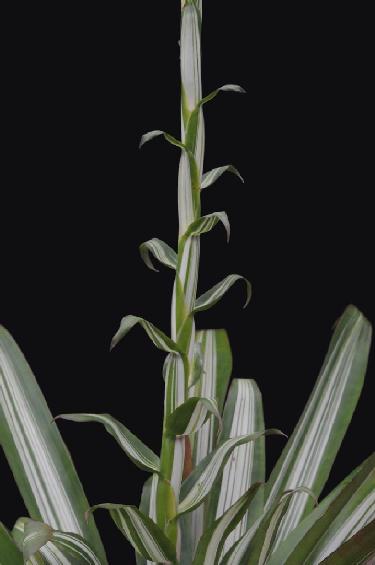
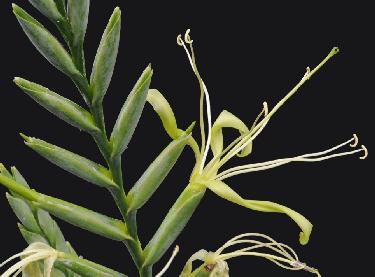

"A few weeks ago PT showed us a photo of T. viridiflora variegata with a candelabra type inflorescence and nothing like the single spike of a typical T. viridiflora.
Well, we have bitten the bullet and given it a cultivar name of 'Silver Candelabra'. Why, well, the Germans AND the Mexicans agree that the Tillandsia macropetala with the branched inflorescence should never have been treated as a synonym of T. viridiflora but are ignoring the variegated plant because it was only found in the wild once. It has survived by being propagated by offsets for the last 42 years. So if you copied PT's photo for your own files please note the name of 'Silver Candelabra'. Some will be in a dither for a while if they try to link the name to a species name, as T. macropetala hasn't been 'legalised' yet."
(*Ed. T. viridiflora and T. macropetala moved to Pseudalcantarea genus in 2016)
Latest update...See Detective Derek 11/10 for more details

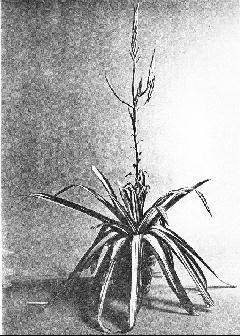

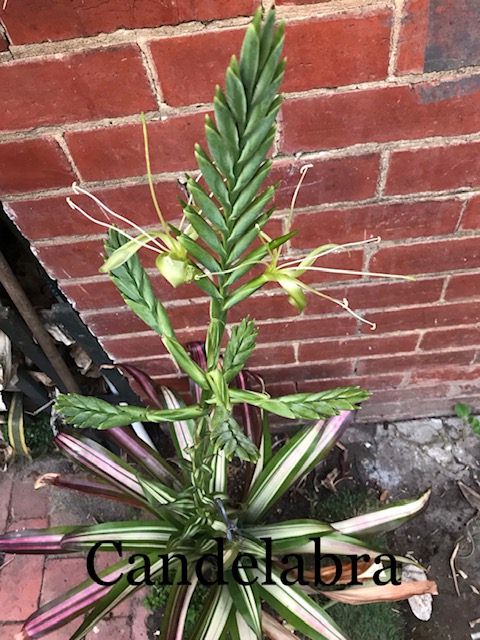
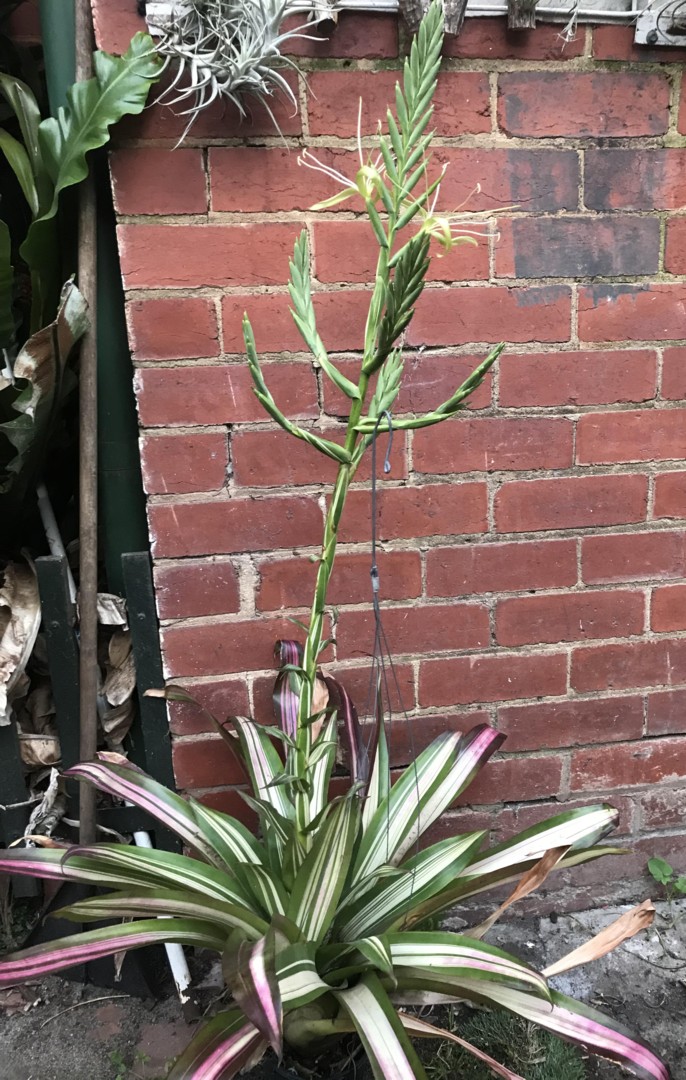
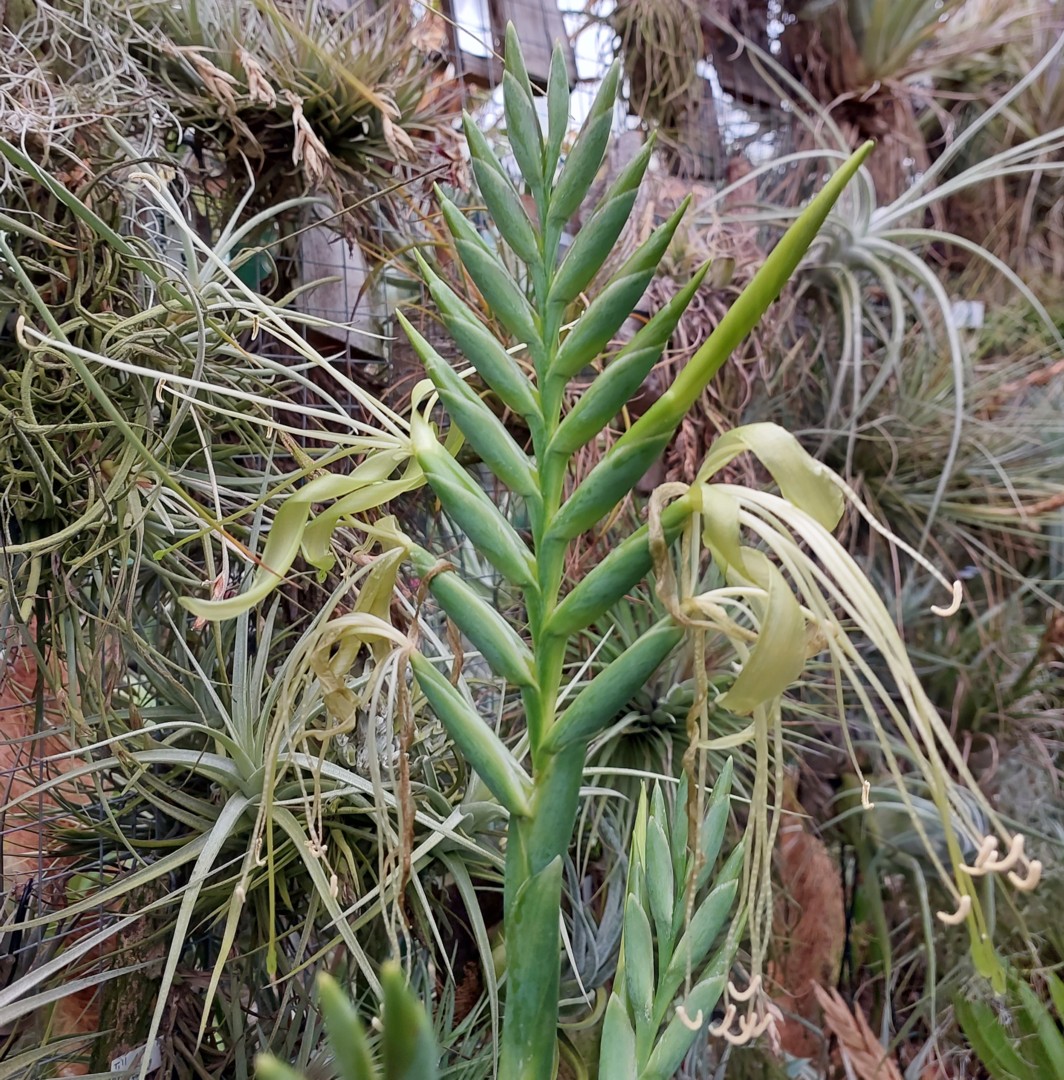

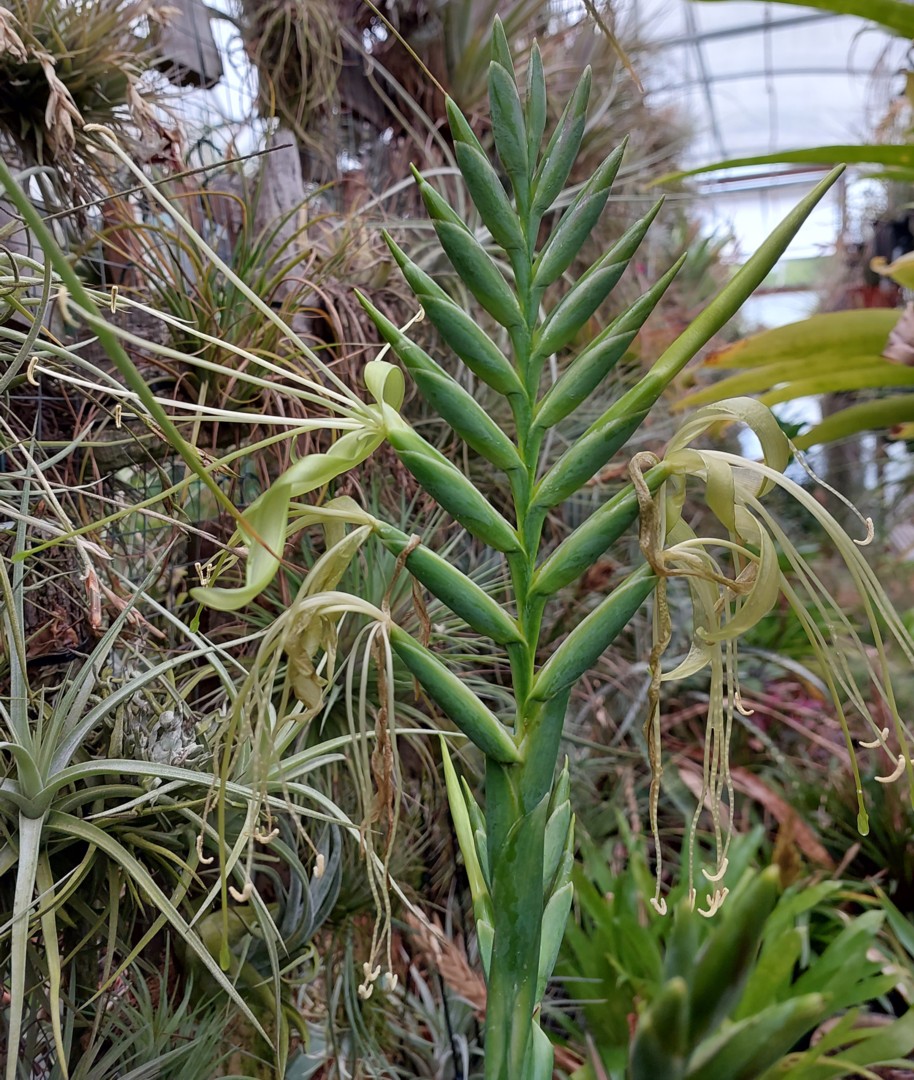
Derek Butcher ... "Many of you must be growing this plant especially if you live in wetter climes to Adelaide! Please advise if any of you have this plant but with a branched inflorescence and I don't mean the rather large Tillandsia grandis."
Peter Tristram ... "Not at FDN so far, though I have a few coming into bloom again so will keep an eye out. I also have some forms from Europe yet to bloom and I know it can be branched so I'll have to wait a few years."
Maurice Kellet ... "I have checked all of my T. viridiflora plants and both of the green and red forms with dead flower spikes only have single spikes.
I suspect that a branched plant could be a cultural improvement such as the digitate form of T. lampropoda which for me has reverted back to a single spike !!!
I also have a flowering size T. grandis that was collected as a seedling in 1972 !!!
Do you want me to send the flower spike by road freight for you to dissect when it eventually flowers ????
When I was collecting in Vera Cruz a condition of my collecting permit was that I had to also collect a flowering plant of each species to take back to Dr Matuda for him to study at the University. As the flower spikes were taller than me and I was travelling by bus this was one requirement that I overlooked !!!"
Derek Butcher ... "Peter, how is it your mate Mick in Melbourne has this plant as well as the variegated form? see attached for detail. Why this sudden interest in T. viridiflora ? If you look at the DVD on T. viridiflora you will see a discrepancy in the number of quoted synonyms in Smith & Downs AND that quoted by Beaman & Judd in 1996.
All those quoted in Beaman and Judd have simple inflorescences but they still say inflorescence is sometimes branched. Unless you twigged this, the missing synonym is T. macropetala which is the only one whose original description says inflorescence branched.
Apparently the Mexicans have found this branched plant in the wild and we may well see T. macropetala as a proper species. If so we know it is already in Australia.
Just a bit of prior notice. By the way, the variegated form is still without a proper name, so perhaps the Aussies may well do the honours."
Peter Tristram ... "As I said ... a few years for the Europeans but the variegated one is in bloom at FDN. I vaguely remember it being branched but it is many years since I bloomed one. I should have remembered the photo! Soon I will be able to check as it has taken many years to grow the tiny grass pups to maturity and a few are coming into bloom, along with the beautifully variegated inflorescence (straight up at the moment) you mentioned. I finally got the plant from Pam, after losing a few to gas in the late '80s. The main problem is that I have no fully variegated adventitious pups and I don't think they give proper pups."
Peter Tristram ... "About 3 months ago UD started some interest in the branched T. viridiflora which is in Australia as T. viridiflora ‘Variegata’. I think the suggestion was to get the plant a cultivar name? There must be quite a bit floating around as it was collected in the early ‘70s and gives lots of adventitious pups (though throws far more non-variegated adventitious pups than variegated ones).
I don’t know where it was collected nor its collector, though UD might so I suggest the search for a cultivar name should begin with either."
Derek Butcher ... "I have sent you privately those emails that have confirmed that things are on track for T. macropetala to be resurrected from T. viridiflora. When this happen is anyone's guess. But we do know that the variegated form will not rate a mention which is in line with all such recent name changes. Variegated species get ignored for obvious reasons. It is only horticulturists who asexually propagate them to make them popular in private collections. This is why I treat identity of variegated forms of species to be mainly in the realm of the Cultivar name. As far as I recall only Peter Tristram and Mick Romanowski saw that this plant was not typical T. viridiflora. So if you can both agree on a name I can arrange for registration and maybe even write an article on its history."
Chris Larson ... "Hi Derek & Peter. Have you got a tentative description of the proposed T. macropetala? & if so, do the "bits" of this variegate sit close to "either species"?"
Derek Butcher ... "I thought you were averse to butchering plants and went on pictures. As such I enclose a drawing from the 1800's to help you decide. On the technical side I will send you privately the yet to be published paper."
Peter Tristram ... "UD, I mentioned that many non-variegated adventitious pups are produced so I would certainly like to check this plant against the description of macropetala as many will need a different name to the variegated ones. The 2 black and white images show a considerable difference in fb proportions too so some measurements would be interesting, so cc that paper to Repton too, plz. I have been selfing it too."
Len Colgan ... "Please look at the attached file. It is one of the slides at the end of my presentation in New Orleans, and represents one of four bits cut from a large DNA table. My interpretation of this table indicates that Tillandsia viridiflora is not a tillandsia. It separated many millions of years ago, and is most likely a monospecific new genus on its own. Let's face it - name me another Tillandsia with similar properties... perhaps our recent discussion is relevant."
Derek Butcher ... "I agree that viridiflora is really a Pseudalcantarea and there are two or three of these. In fact when Jason was bouncing the idea of resurrecting of Alcantarea off me I said why didn't he include Pseudoalcantarea because it only differed by not having petal appendages. He said the same 'B' word that Bertie uses."